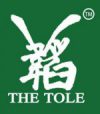Adenomyosis is a medical condition in which the endometrial tissue, which normally lines the uterus, grows into the muscular walls of the uterus. This can cause a range of symptoms including heavy menstrual bleeding, painful periods, and pelvic pain. In Traditional Chinese Medicine (TCM), adenomyosis is understood as a disorder of the uterus and is often classified as a type of blood stasis syndrome.
According to TCM, the uterus is an important organ for women’s health and is closely related to the liver and the kidneys. The liver is responsible for regulating the flow of Qi (vital energy) and blood in the body, while the kidneys govern the reproductive system and control the growth and development of the body’s tissues.
When there is a disturbance in the flow of Qi and blood in the liver and uterus, it can lead to the development of adenomyosis. This can be caused by a number of factors, including emotional stress, poor diet, and overexertion. In addition, TCM practitioners believe that certain constitutional factors, such as a weak spleen or kidney deficiency, can make women more susceptible to developing adenomyosis.
The symptoms of adenomyosis in TCM are closely related to the concept of blood stasis, which is a condition in which the flow of blood becomes sluggish and stagnant. This can lead to a range of symptoms, including pain, swelling, and immobility. In the case of adenomyosis, blood stasis can cause the endometrial tissue to grow into the muscular walls of the uterus, leading to the characteristic symptoms of heavy menstrual bleeding and pelvic pain.
Treatment for adenomyosis in TCM focuses on promoting the flow of Qi and blood in the liver and uterus, and resolving blood stasis. This can be achieved through a combination of acupuncture, herbal medicine, dietary therapy, and lifestyle modifications.
Acupuncture is a key component of TCM treatment for adenomyosis and involves the insertion of fine needles into specific points on the body to stimulate the flow of Qi and blood. Acupuncture can help to relieve pain and reduce inflammation in the uterus, as well as regulate the menstrual cycle.
Herbal medicine is also an important aspect of TCM treatment for adenomyosis, with a range of herbs used to promote blood circulation and resolve blood stasis. Some common herbs used in TCM for adenomyosis include Dan Shen, Tao Ren, and Hong Hua.
In addition to acupuncture and herbal medicine, dietary therapy and lifestyle modifications can also be effective in treating adenomyosis. TCM practitioners may recommend a diet rich in foods that promote blood circulation, such as dark leafy greens, beets, and ginger. Regular exercise and stress reduction techniques, such as meditation and yoga, can also be beneficial.
In conclusion, adenomyosis is a complex medical condition that can be effectively treated using TCM. By promoting the flow of Qi and blood, resolving blood stasis, and addressing underlying constitutional imbalances, TCM offers a holistic and natural approach to manage this condition. If you are experiencing symptoms of adenomyosis, it is important to consult with a qualified TCM practitioner to develop a personalized treatment plan that addresses your specific needs.
